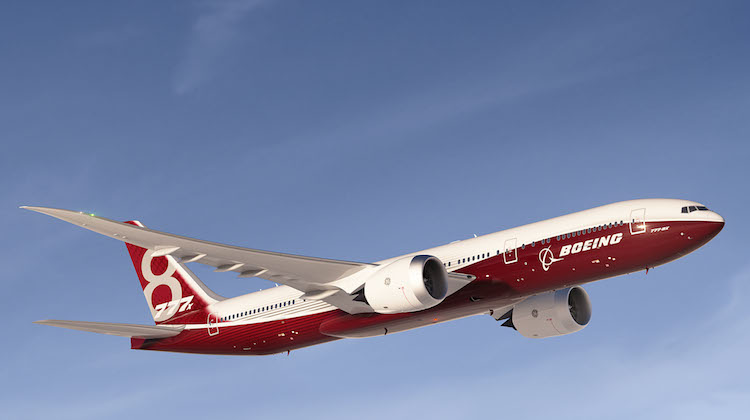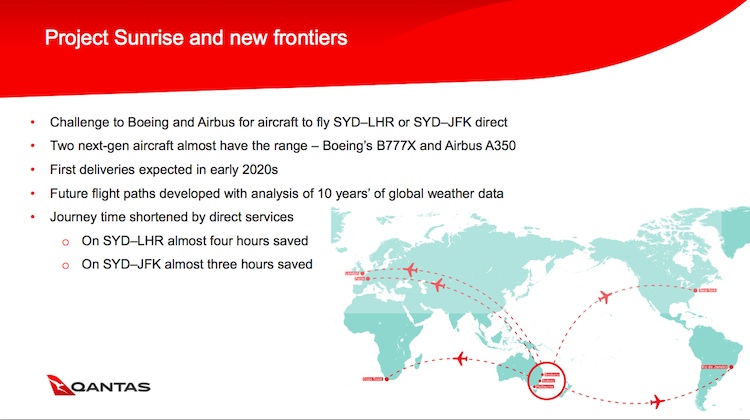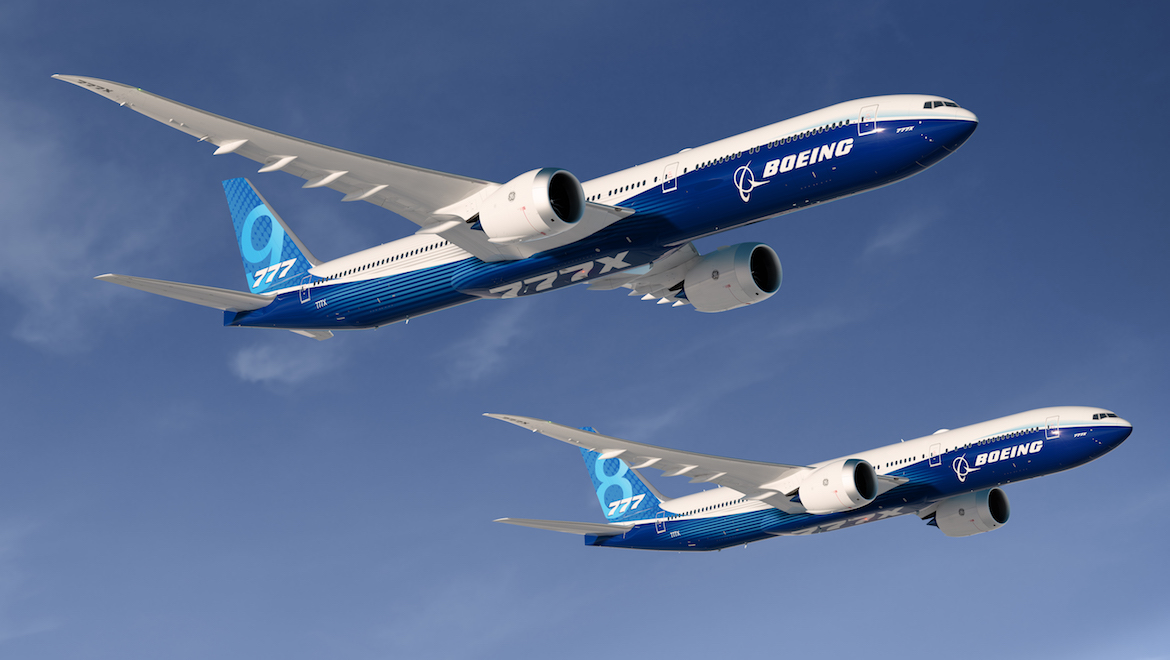
Boeing says it has pushed back the timeline for the entry-into-service of its 777-8X ultra-long range widebody to “reduce risk” in the program.
The airframer said the decision to delay first delivery of the 777-8X followed a review of the “development program schedule and the needs of our current 777X customers”.
“The adjustment reduces risk in our development program, ensuring a more seamless transition to the 777-8,” Boeing said in a statement to Australian Aviation on Thursday.
“We continue to engage with our current and potential customers on how we can meet their fleet needs. This includes our valued customer Qantas.
“We remain committed to the 777-8, which will be the most flexible commercial jet in the world and offer our customers optimal range and payload.”
The 777-8X was due to enter service in 2022.
Qantas has been evaluating launching nonstop flights from Australia’s east coast to London, New York and elsewhere with either Airbus A350s or Boeing 777-X equipment. The evaluation, known as Project Sunrise, was launched in August 2017.
The airline has said previously it was planning on making a decision on whether to place an aircraft order by the end of 2019, with delivery in 2022 and flights taking off in 2023. That timeline was unchanged, Qantas said in a statement on Thursday.
“We continue to work with Airbus and Boeing on Project Sunrise,” Qantas said.
“We have the best-and-final offers from both manufacturers, which is a key part of helping finalise our internal business case.
“We still expect to make a decision by the end of this calendar year.”
Qantas has said previously the business case for these ultra-long-range services was contingent an appropriate aircraft, as well as a new agreement with its pilots, changes to regulations regarding fatigue and duty hours for crew and an appropriate cabin configuration.
“We are so excited about Project Sunrise,” Joyce told delegates at the CAPA – Centre for Aviation Australia Pacific Aviation and Corporate Travel Summit in Sydney on August 7.
“We are still making huge progress on all aspects of that project.
“And as I have said before, our intention is to make a call on it, if the business case works, by the end of this year.”
#Qantas CEO Alan Joyce is the first speaker at this year’s #CAPASummit in #Sydney. He says seat factors on the airline’s nonstop #Perth–#London Heathrow flight is more than 90 per cent. The route is served with 236-seat, three-class #Boeing 787-9 equipment pic.twitter.com/JX9DPrdPwJ
— World of Aviation (@the_wofa) August 6, 2019
A request for information (RFI) with Airbus and Boeing was conducted in 2018 that went through the technical capabilities of the A350 and 777-X platforms.
Joyce told Australian Aviation earlier in 2019 the RFI process concluded that what Airbus and Boeing could offer would be able to operate with a full payload between Sydney and New York and a “commercial payload” between Sydney and London.
The Boeing 777-X program is already facing delays, with first flight of the 777-9X pushed back to early 2020, from a previously expected mid-2019 timeline, due to issues with the aircraft’s GE9X engine’s compressor.
Despite the delays, Boeing said recently it was still targeting 2020 for first delivery of the 777-9X.
Meanwhile, up against the 777-8X is Airbus’s A350 platform, which comprises the A350-900, the A350-900ULR (ultra-long range) and A350-1000.
Airbus has previously floated the idea of developing a ULR version of the A350-1000.

The 777-X is a two-aircraft family
Launched in 2013, the 777-X family of aircraft comprise the 777-8X and 777-9X variants. The pair is an upgrade from Boeing’s in-production 777-200LR and and 777-300ER.
In addition to the new GE Aviation GE9X engines, features of the 777-X family included composite wings with folding wingtips to maintain its Code E rating at airports, as well as in-cabin enhancements such as larger overhead stowage and a wider cross section.
The 777-9X is 77 metres in length and has a total wingspan of 72 metres with its wingtips extended. It is capable of flying 7,285nm when carrying 426 passengers in a two-class configuration, according to Boeing figures.

It has been pitched as the ideal replacement for the very large aircraft segment of the market, especially in light of Airbus’s decision to cancel the A380 program.
Meanwhile, the 777-8X is still in development. The Boeing website lists the aircraft as having a range of 8,690nm and a passenger capacity of 384 passengers in a two-class layout. In addition to being a candidate for Qantas’s Project Sunrise, the 777-8X is also a potential replacement for the in-service Boeing 777-300ER.

The 777-X program had received 344 orders at July 31 2019 according to the Boeing website.
Boeing has also been grappling with the grounding of the 737 MAX following two fatal crashes, in October 2018 and March 2019. The company has thrown considerable resources and manpower in working to recertifying the aircraft after an anti-stall software was implicated in both accidents.
The 737 MAX grounding has also been a significant drag on Boeing’s bottom line, with the airframer posting a net loss US$2.94 billion for the second quarter of calendar 2019.










